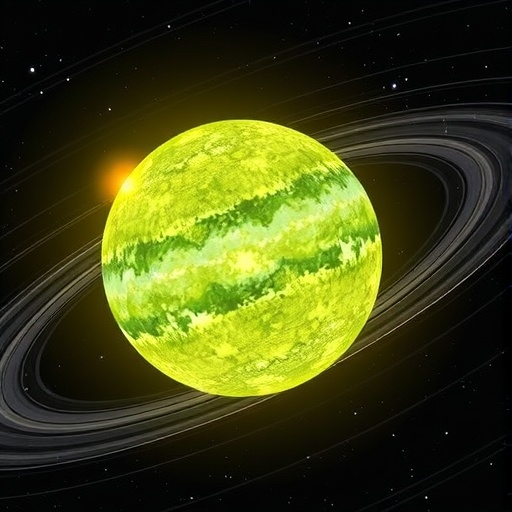In a groundbreaking study poised to challenge long-held tenets of cosmology, researchers led by astrophysicist Lukas Böhme at Bielefeld University have unveiled startling new measurements regarding the velocity of our solar system as it journeys through the cosmos. Published recently in the prestigious journal Physical Review Letters, this research leverages the unprecedented sensitivity of modern radio astronomy to reveal that the solar system is moving at a speed more than three times faster than previously predicted by the standard cosmological model. This divergence from established theory demands a critical reexamination of cosmic structures and the foundational assumptions that govern our understanding of the universe.
Central to the study is the intricate analysis of radio galaxies — celestial objects distinguished by their intense emission of radio-frequency electromagnetic waves. Unlike visible light, radio waves have the distinct advantage of penetrating interstellar dust clouds, granting astronomers an unobstructed view into distant and often hidden reaches of the universe. These radio galaxies, situated billions of light years away, serve as cosmic milestones, their spatial distribution encoding subtle signals of our solar system’s motion through space.
The methodology employed by Böhme and his collaborators is notable for its innovative approach to data aggregation and statistical analysis. Utilizing the comprehensive datasets from the Low Frequency Array (LOFAR), an expansive network of radio telescopes spanning Europe, alongside complementary observations from two additional radio observatories, the team performed the most precise census of radio galaxies to date. Critically, they introduced a novel statistical technique designed to account for the complex morphology of many radio sources, which frequently consist of multiple components. This advancement not only improved the accuracy of the count but also provided a more realistic estimate of the measurement uncertainties.
The crux of the findings lies in the detection of a pronounced anisotropy—referred to as a “dipole”—in the distribution of these radio galaxies. This dipole manifests as an asymmetric enhancement in the number of galaxies observed toward the direction of the solar system’s travel, akin to a cosmic headwind revealing our motion relative to the broader cosmos. Strikingly, the amplitude of this dipole was found to be approximately 3.7 times greater than what the ΛCDM (Lambda Cold Dark Matter) standard model predicts. Statistical analysis confirmed the robustness of this detection, with a significance level exceeding five sigma, indicating an exceedingly low probability that the observation is a mere statistical fluke.
Such a substantial deviation has profound implications for cosmology. The standard model, which has successfully described the evolution and large-scale structure of the universe since the Big Bang, relies heavily on the assumption of isotropy—that, on the grandest scales, matter is uniformly distributed. The unexpectedly high velocity of the solar system challenges this premise, potentially pointing to hitherto unknown cosmic structures or variations in matter distribution. As co-author Professor Dominik J. Schwarz emphasizes, this discrepancy forces scientists to confront two intriguing possibilities: either the universe’s large-scale structure is more heterogeneous than current models allow, or our understanding of motion relative to the cosmic backdrop requires refinement.
Further bolstering these results, the study harmonizes with earlier observations of quasars—exceedingly luminous cores of distant galaxies powered by supermassive black holes. Previous infrared surveys revealed similar anisotropic patterns, lending credence to the idea that the observed excess dipole in radio galaxy counts is not an artifact of instrumentation or methodological errors but an intrinsic characteristic of the universe itself.
The implications of this research extend beyond mere velocity measurements. They invite a fundamental reassessment of cosmological principles, potentially necessitating revisions to the models that describe dark matter distribution, cosmic inflation, and large-scale gravitational effects. Moreover, this discovery could serve as a catalyst for the development of new physics theories, encompassing modifications to the standard cosmological paradigm or the introduction of novel cosmic phenomena.
This study underscores the transformative power of modern observational methods in uncovering subtle cosmic features once regarded as beyond reach. The synergistic use of multiple radio telescopes, coupled with advanced statistical methodologies, exemplifies how precision measurements in radio astronomy can unveil new dimensions of the universe’s complexity. Such breakthroughs demonstrate the indispensable role of interdisciplinary approaches in contemporary astrophysics.
Looking ahead, these findings set a compelling agenda for the cosmology community, emphasizing the need for further observations and theoretical investigations. Extending the survey coverage, increasing the sensitivity of radio observations, and deploying complementary datasets from other electromagnetic wavelengths could refine and substantiate these initial results. Additionally, integrating simulations and theoretical modeling will be crucial in discerning the origin of the observed anisotropy and its broader cosmological context.
In conclusion, the discovery of the solar system’s unexpectedly high velocity not only defies current expectations but also opens tantalizing new pathways for exploring the cosmos. As we delve deeper into the universe with ever-more sophisticated tools, such revelations remind us of the vast mysteries that remain and the dynamic nature of scientific progress. The cosmos, it appears, still harbors secrets that challenge our understanding, beckoning us to look beyond established horizons.
Subject of Research: Not applicable
Article Title: Overdispersed Radio Source Counts and Excess Radio Dipole Detection
News Publication Date: 10-Nov-2025
Web References: https://doi.org/10.1103/6z32-3zf4
Image Credits: Böhme
Keywords
Solar system velocity, radio galaxies, cosmic anisotropy, cosmology, radio astronomy, LOFAR, cosmic dipole, standard cosmological model, ΛCDM, astrophysics, large-scale structure, cosmic microwave background




